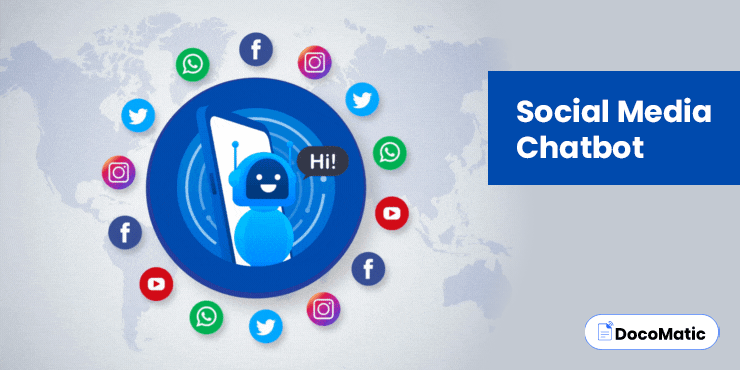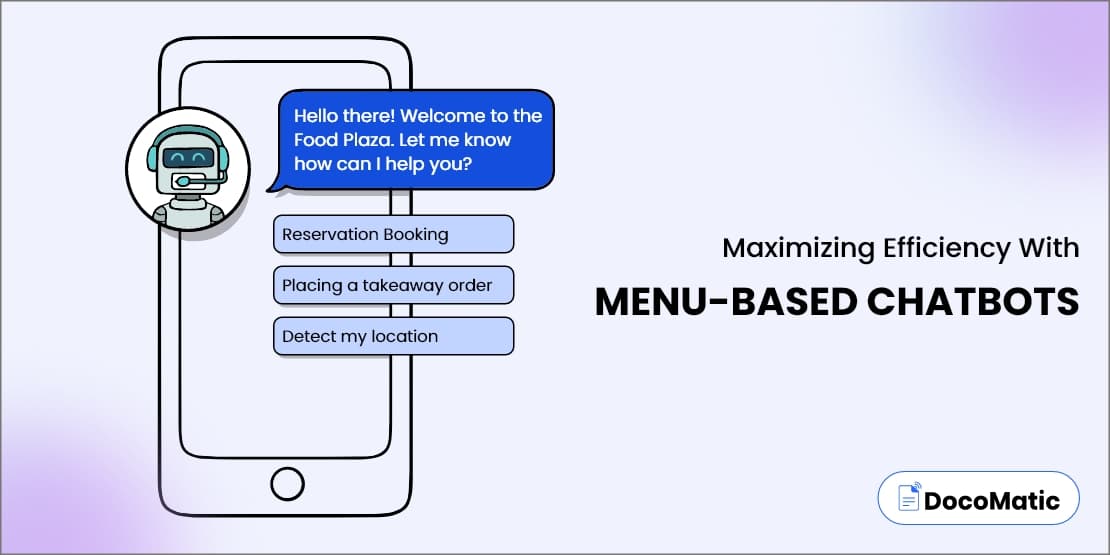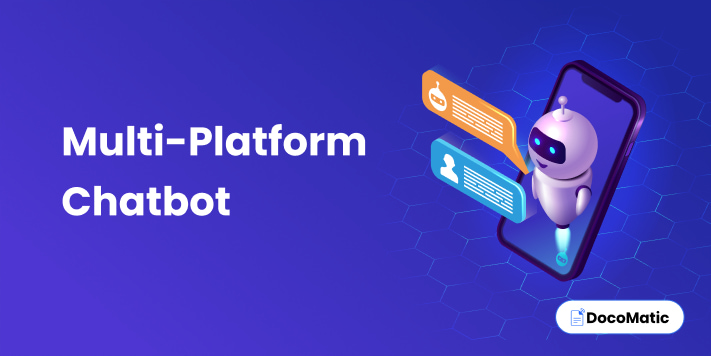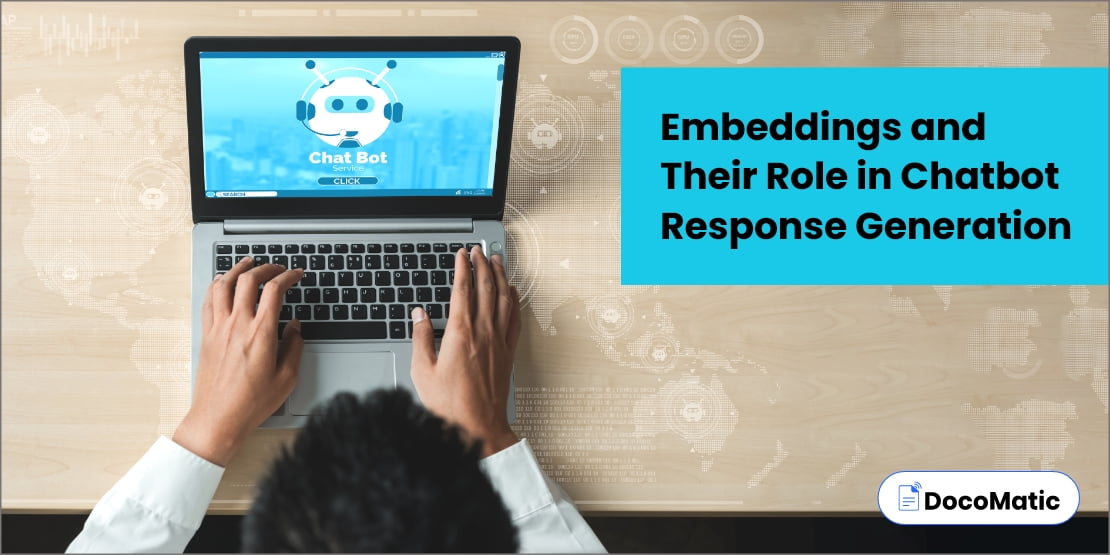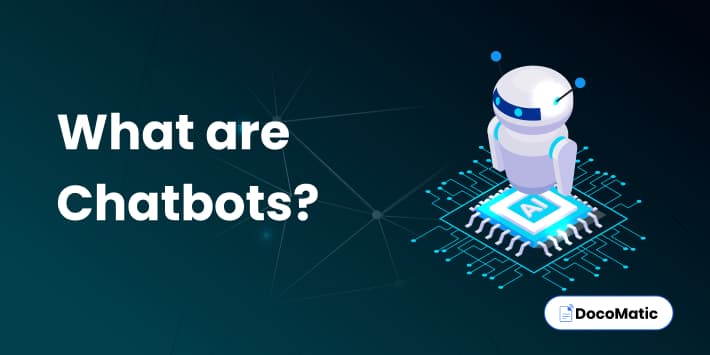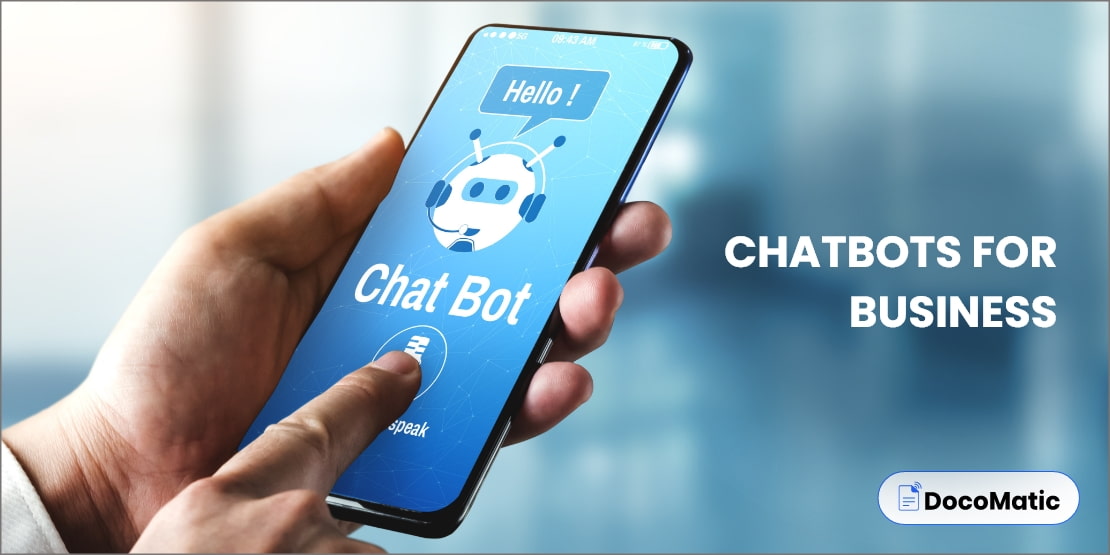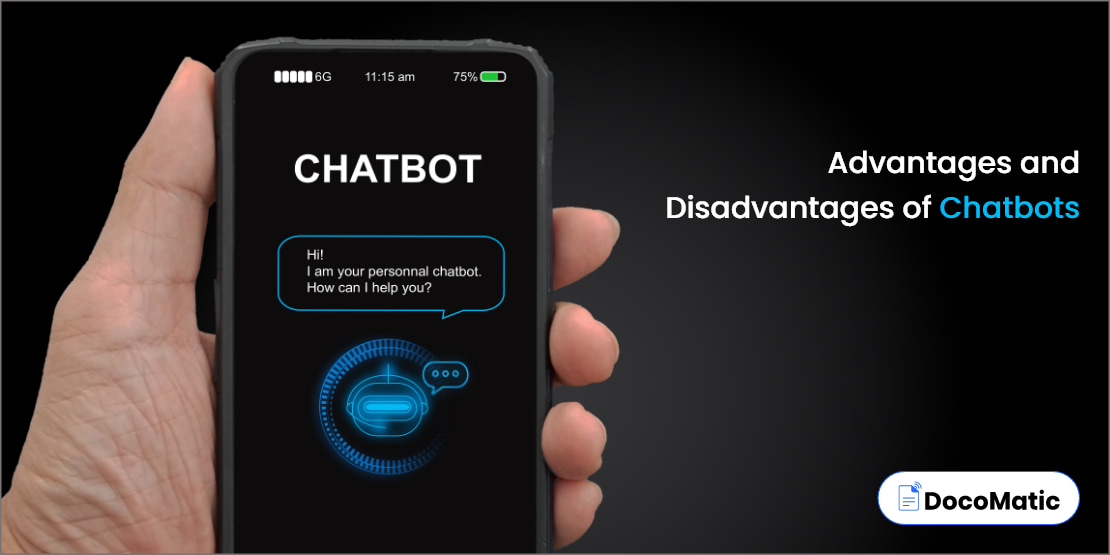With the rise of artificial intelligence (AI), social media chatbot is becoming a powerful tool for any business looking to:
- Improve customer service
- Speed up the response time
- Generate leads
- Simplify operations
- More personalized experience
- Bolster social media marketing strategy
To give you an example of its power, do you know you can order a pizza from Domino’s via Twitter, Facebook Messenger, and Instagram?
Chatbots are transforming how businesses communicate personally with their target audience while also saving time, effort, and money.
Thus, it is needless to say that they are quickly becoming an essential part of any successful marketing strategy.
So, in this article, you will dive deeper into understanding what social media chatbots are, their benefits, real-life examples, best practices for these chatbots, and lastly their potential impact.
Table of Content
- Understanding Social Media Chatbots
- Features of Social Media Chatbots
- What Social Media Chatbots can do for You?
- Benefits of Social Media Chatbots
- Examples of Chatbots in Use for Businesses
- Best Practices for Social Media Chatbots
- How to Add a Chatbot to Your Social Media?
- The Future of Social Media Chatbots
- Potential Challenges With Chatbots
- FAQs
- Conclusion
Understanding Social Media Chatbots
Let’s say that you have a team of customer service reps who interacts with your existing and potential clients to resolve their queries. But they have their limitations:
- One customer service agent can only attend to one person at a time.
- They work for only a certain number of hours.
- Their knowledge and motivation may vary.
But what if we tell you that you can remove all these limitations and free up your team to do more important tasks? Yes, you can do it with what is essentially just a piece of code – a social media chatbot.
These chatbots are computer programs that can converse on social platforms with an almost human-like style and accuracy. The keyword here is “almost.” How? By using machine learning (ML) and natural language processing (NLP) algorithms.
Recommended: Learn “What are Chatbot?” in detail.
Features of Social Media Chatbots
Here are some of the things modern chatbots can do for you:
1. Natural language processing (NLP)
What do you think – how can a piece of code understand what you are saying? It is NLP that gives a chatbot the power to understand any text even if the same message is conveyed in different ways.
2. Sentiment analysis
You know emotions aren’t hard to understand when expressed. If fact, it is so easy to determine, that even a chatbot can tell whether you are elated or pissed off depending on the words you use.
This is done using semantic analysis so that the chatbot can detect emotions and respond accordingly.
3. Conversation flow
You don’t want your social media chatbot to interact with the prospect about what Leonardo Dicaprio eats for breakfast. Right?
That’s where conversational flow comes in. It guides your chatbot to keep the interaction on track and relevant.
What Social Media Chatbots can do for You?
Such chatbots are programmed to perform a wide variety of human-related tasks such as
- Providing customer support and answering FAQs
- Generating leads and automating sales processes
- Offering personalized product recommendations based on user preferences and behavior
- Sending notifications and reminders to social media users
- Conducting surveys and gathering customer feedback
All that’s great. But you may be wondering how it helps you to integrate a chatbot into your business’s social media accounts. That’s what we will cover next.
Benefits of Social Media Chatbots
The popularity of social media chatbots is rising rapidly for a reason (in fact, 3). Here are they:
1. Improved customer experience
Your sales rep may work 8 hours a day. But isn’t necessary that a dire need for help or a business opportunity will arrive only during those hours. So whether it is 5 in the morning or 10 in the evening, someone needs to be there.
Thus, a social media chatbot stays awake 24/7 and works tirelessly to engage with all your customers to provide great customer service. Don’t think that your ready availability will make your prospect feel special?
2. Lead generation
A lead is where a business starts to smell money. So, by engaging with your audience all day on social media platforms, your chatbot can move them through your sales funnel.
For example, it can provide personalized recommendations based on the needs of a prospect. This makes the purchase easier and more likely.
3. Cost savings
Chatbots reduce the workload on customer service teams to a great extent. It automates routine tasks and customer inquiries, leading to more work being done and money saved.
On top of that, modern processing power empowers chatbots to handle even a huge customer base at any given time as compared to human agents. This limits the need to hire more manpower, which ultimately results in a cost-effective approach to handling customer queries.
Recommended: Advantages and disadvantages of chatbots
Examples of Chatbots in Use for Businesses
Many different industries have successfully used chatbots in social media and are reaping its benefits.
1. Clothing
H&M, a clothing retailer, uses a chatbot on the Kik messaging app to make personalized product recommendations to each prospect.
It asks a series of questions about your preferences and then recommends you an outfit that matches them.
2. Healthcare
HealthTap employed a chatbot to provide medical advice to users on Facebook Messenger. It uses NLP to understand the inquiry and then provides answers based on its database of medical information.
3. Finance
Capital One has integrated a chatbot into Amazon Alexa. It allows customers to check their account balances and pay bills using voice commands to Amazon Alexa.
At this point, you may be tempted to create your own chatbot. But before that, keep the following things in mind.
Best Practices for Social Media Chatbots
Designing and implementing effective chatbots requires careful planning and attention. So, here are the best practices that you must follow to get the maximum benefit out of them.
- Carrying out manual testing to pinpoint areas that need improvement.
- Utilizing analytics to monitor user behavior and assess the chatbot’s effectiveness.
1. Provide clear and concise responses
Giving concise and clear answers to user inquiries is one of the most important aspects of a successful chatbot. The chatbot should be capable of understanding the user’s request, responding quickly with the required information, and in a friendly tone.
To do this, it’s critical to design the chatbot so that it can recognize a variety of inputs and offer responses that are relevant to the query.
2. Integrate seamlessly with the customer journey
The seamless integration of these chatbots with the whole customer journey is very rewarding. This means creating the chatbot with all the customer touchpoints in mind, such as your website, mobile app, or brick-and-mortar store.
To provide customized responses that are catered to the needs of the user, it is crucial that the chatbot has access to relevant customer data, such as purchase history or account information.
3. Use Natural Language Processing (NLP)
The Natural Language Processing (NLP) technology is essential for developing an efficient chatbot. Why? Because it enables chatbots to respond to social media users in a natural and conversational way.
With the help of NLP, bots can comprehend synonyms, slang, and everyday language, potentially improving the user’s chatbot experience.
4. Test and iterate
A top-notch chatbot experience is to be delivered by regularly testing and refining it. This requires:
Pro Tip: Testing is a continuous process. The more you refine it to improve the chatbot, the better will be the customer experience.
Now, let’s look at how you can integrate an AI-powered chatbot with your social media accounts.
How to Add a Chatbot to Your Social Media?
The steps to integrate an AI powered chatbot can vary depending on your targeted social media handles and the chatbot service you use. But here are some general steps you can take:
- Pick a chatbot platform that is compatible with your targeted social media page. Most services offer integrations with major players like Twitter, Facebook, and Instagram.
- Sign up and create your chatbot.
- Connect your chatbot to your social media accounts.
- Feed your chatbot with appropriate information to understand your brand and give accurate replies.
- Test your chatbot regularly and rigorously to remove errors.
- Monitor its performance to see how it converses with the person in front.
Integrating a chatbot is easy. But training it to more accurate is a long and arduous process. So keep testing it until it reaches perfection and then some. But is it worth it?
Have a look at what lies ahead for chatbots to see their potential.
The Future of Social Media Chatbots
The future of social media chatbots is promising, with the potential for even greater levels of personalization, efficiency, and automation. This can be proven by the development of 2 other technologies:
1. Voice assistants
Chatbots are anticipated to follow the widespread adoption of voice assistants like Amazon’s Alexa and Apple’s Siri.
Users can interact with the chatbots using voice commands by integrating voice assistants with chatbots, enhancing the conversational and intuitive nature of the experience.
2. Chatbot-to-chatbot communication
More sophisticated chatbots will be able to communicate with one another, enabling more intricate and sophisticated interactions.
Greater levels of automation may result from this development because chatbots can handle repetitive tasks and deliver more effective service.
In addition to this, these chatbots are also on their way to continue improving in other areas:
1. Responding to emotions
The capacity to understand and respond to user emotions using sentiment analysis and other methods is improving every day.
With this, the user experience will be enhanced as a result of chatbots being able to connect better and respond with more empathy.
2. Integration with other business tools
The integration of chatbots with other business tools, like CRM and marketing automation platforms, is another area of growth for the technology.
Businesses can learn even more about customer behavior and preferences by integrating chatbots with these tools. This enables even more effective interactions and targeted marketing campaigns.
The potential of chatbots is immense. But that’s not all. They have limitations too.
Potential Challenges With Chatbots
It’s not all sunshine and rainbows. While social media chatbots offer many benefits to businesses, there are also potential challenges that should be considered as well:
- As users grow more concerned about the data being collected and how it is being used, privacy concerns can be a significant challenge for it.
- Businesses must abide by data privacy laws like the GDPR and CCPA and should be open and honest about the data they collect and how they use it to respond to user concerns.
- Businesses should be prepared to devote time and resources to ensure that the chatbot is consistently providing accurate and relevant responses.
- Chatbots occasionally misinterpret user requests or give irrelevant answers, which irritates the user. Processes for rigorous testing and quality control can aid in overcoming this limitation.
FAQs
Social media handles are an integral part of our daily lives, not just personally but commercially as well. So, through API integration, chatbots can connect with various social media channels and interact with users through messaging apps or direct messages.
The chatbot receives user messages, processes them using natural language processing (NLP), and then replies with pertinent information using pre-established rules or machine learning algorithms.
Creating a chatbot is easy:
- Choose a chatbot platform.
- Obtain an API key for GPT-3 and integrate it with your chosen platform.
- Train the chatbot.
- Deploy your chatbot to the real world
For more details, you can follow our step-by-step guide on how to build a chatbot with GPT-3.
Conclusion
Here is all you need to know about social media chatbots. This is the future of online interactions and will become the norm as each day passes. So, are you excited and ready enough to embrace this change and create a chatbot for your business?
